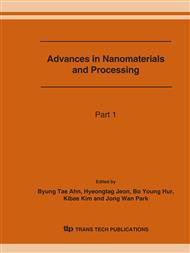p.527
p.531
p.535
p.539
p.543
p.547
p.551
p.555
p.559
Numerical Analysis of Self-Organizing Interconnection Process by 3 Dimensional Flow Dynamics
Abstract:
The growing importance of high integration on electronics demands novel interconnection methods replacing high-cost solder bumping or less reliable conductive adhesives. Self-organizing interconnection process using resin containing solder fillers has a possibility to achieve high-density joints satisfying both needs. Numerical study visualized the process and revealed that surface tension of molten fillers and resin viscosity determine the speed of conductive path formation.
Info:
Periodical:
Pages:
543-546
Citation:
Online since:
June 2007
Authors:
Price:
Сopyright:
© 2007 Trans Tech Publications Ltd. All Rights Reserved
Share:
Citation:


